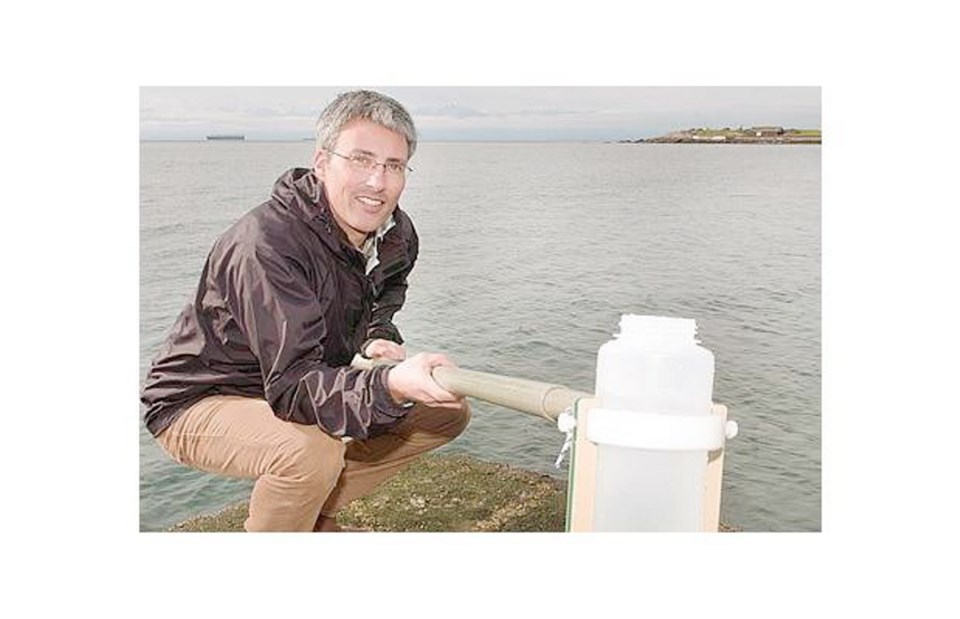A University of Victoria researcher is assembling a comprehensive coastal radioactivity monitoring program just as the amount of contaminated debris from the 2011 Fukushima-Daiichi nuclear disaster is set to peak in B.C. waters.
Chemical oceanographer Jay Cullen is recruiting “citizen scientists” to collect seawater samples monthly from 14 locations between Victoria and Haida Gwaii.
Samples will be analyzed for the presence of “fingerprint elements” known to have been released — and which continue to be released — from the site of the three-reactor nuclear plant meltdown in Japan, he said.
The project will also collect salmon from all the major spawning runs in B.C. to determine the extent of contamination accumulating in the fish during their time migrating and feeding in waters affected by the ocean-borne plume of radioactivity emanating from Japan. Salmon supplied by the Nisga’a First Nation and the Department of Fisheries and Oceans and other community partners will be analyzed by Health Canada.
“The physical models of circulation that we have for the North Pacific predict that the part of the plume that was released in 2011 is now coming in contact with [B.C.] coastal waters, and that over the next two years the maximum activity from that very large pulse of radioactivity is due to arrive,” Cullen said.
The Integrated Fukushima Ocean Radionuclide Monitoring Network — or InFORM Network — will build on modest monitoring programs run by the DFO in the Arctic and the North Pacific and ongoing monitoring at stationary locations by Health Canada, with the added goal of communicating the testing results as widely and transparently as possible.
“When quality information isn’t available, poor-quality information rushes in to fill that gap,” said Cullen. “That’s the great and terrible thing about the Internet.”
Non-governmental organizations such as Clayoquot Biosphere Trust, the Georgia Strait Alliance, the Raincoast Education Society, the Living Oceans Society and the David Suzuki Foundation are helping recruit volunteers who will commit to the three-year testing program.
InFORM has “borrowed, with permission” its citizen-scientist model from Ken Buessler’s OurRadiactive Ocean.org, which has been crowdsourcing the funds required to test B.C. seawater samples for radiation. Each test costs about $600.
While InFORM’s $630,000 budget is small by some standards, it will relieve the volunteers of the need to raise funds for every sample they collect, said Cullen.
Cullen will be looking for the presence and concentration of specific radioactive elements — cesium 134 and 137 — that do not occur naturally in the environment in water and in sea creatures. Neither has yet been detected in concentrations that threaten human health by federal monitoring programs..



